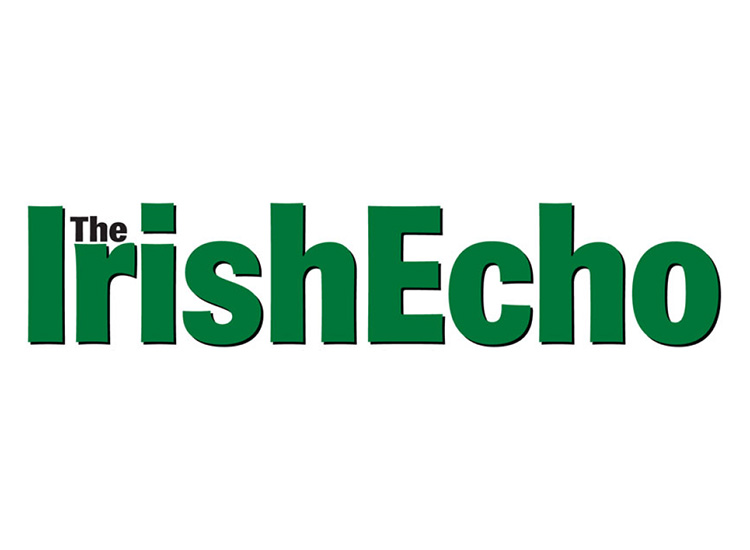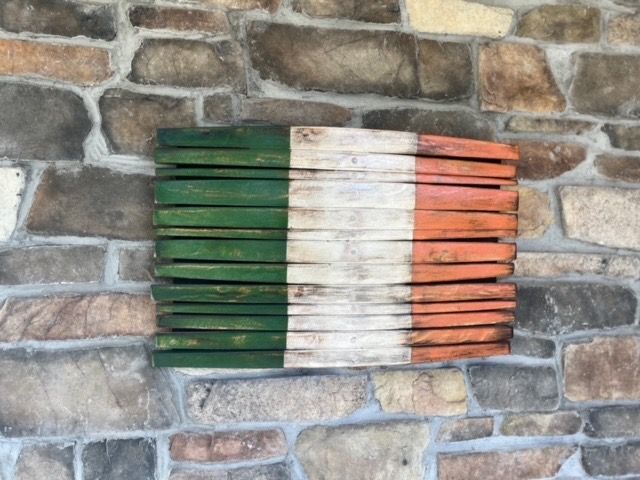Margaret M. Johnson.
Page Turner / Edited by Peter McDermott
The recorded history of tea in China goes back almost 5,000 years. Ireland, in contrast, is such a newcomer that the country’s tea pioneers are still its biggest names.
And so, Bewley’s was officially founded in 1840, not long after the beginning of the story, as the China Tea Company. In 1901, James J. Barry founded Barry’s Tea and began selling it from his shop on Prince’s Street in Cork City. In Dublin in the following year, the Lyons family established their tea business on High Street, near Christchurch Cathedral, before moving north of the Liffey to Marlborough Street, behind the old Gresham Hotel.
In “Teatime in Ireland,” Margaret M. Johnson tells this story in an admirably compressed way. Among its fascinating moments are the breaking of the dependence of Ireland’s tea-drinkers upon the London Tea Auction, with the government’s formation of Irish Tea Importers Ltd. following World War II. Another is the turn towards East Africa in the 1960s.
A constant throughout is the Irish emphasis on quality. Ireland remains one of the biggest consumers of tea, where it’s taken strong and with plenty of milk. Of course, the emphasis here isn’t just on tea; it’s on teatime, and what comes with it. Johnson quotes novelist Henry James: “There are few hours in life more agreeable than the hour dedicated to the ceremony known as afternoon tea.”
After the history, we get chapters “Sandwiches and Savories”: “Scones, Tea Breads and Tray Bakes” and “Teatime Sweets.”
Among the volume’s many impressive features is the kind of photography one usually associates with large-format, hardcover books. It is large format, but in paperback and competitively priced at $19.99.
Jeff Meade of irishphiladelphia.com wrote: “Pull up a chair, pour yourself a steaming cup of your favorite tea, and then settle in for a feast for the taste buds as well as the eyes,” while Roseann Tully of Intermezzo magazine called “Teatime in Ireland” Johnson’s “most glorious book yet”; and Gerry Regan, of thewildgeese.irish social network, said that “Margaret Johnson proves again to be one of Irish gastronomy’s most fervent, accomplished, and artful ambassadors.”
Johnson herself told us, “Simply put, it’s about ‘taking tea,’ both formal and informal, and the special relationship Irish people have with it. It has a bit of Irish tea history and more than seventy recipes for the three ‘courses’ in a formal teas. The recipes come from well-known castle hotels like Ashford and Dromoland; from five-star hotels like the Merrion and the Shelbourne; and from friends who are just great Irish cooks.”
The popular Echo columnist added: “Since I’m not a chef or a food professional, I’m often asked how I started writing cookbooks. My simple answer is this: ‘I’ve always had an interest in cooking and a passion for Ireland; add to that, I was a secondary school English and Journalism teacher for 32 years, so writing, cooking, and traveling became a great mix.’
“My first cookbook came together after I spent months contacting chefs and owner-members of Ireland’s Blue Book hotel collection asking for their best examples of the ‘new Irish cuisine,’ a food movement that emerged in the 1990s,” Johnson recalled. “I was also in the right place at the right time, and when the now-defunct Bon Appetít magazine featured Ireland in its annual ‘Special Collector’s Edition’ (May 1996), people everywhere, including book publishers, began to sit up and take notice.
“The magazine had previously featured popular food destinations like Tuscany, Provence, and Paris, so when a photo of white soda bread with butter and jam appeared on the cover, you knew things were about to change in the world of Irish ‘cuisine,’” she said. “A book agent actually contacted me to encourage me to write a cookbook that would appeal to Irish-Americans. I called it ‘The Irish Heritage Cookbook’ (Chronicle Books, 1998), which focused mainly on traditional recipes. The rest, as they say, is history.”

Margaret M. Johnson
Date of birth: July 7, 1944
Place of birth: Newburyport, Mass.
Spouse: My husband died in 2013 from ALS.
Children: Mark, 45, and Kate, 43; five grandchildren
Residence: Westhampton Beach, N.Y.
Published works: My first book was titled “Festival Europe” (1992), a guide to fairs and festivals throughout Europe, including the “Puck Fair” in Killorglin, Co Kerry, that I enjoyed on my first visit to Ireland in 1984. After visiting two to three times a year after that, I became fascinated with the food scene and turned my attention to the “food revolution.” From the mid-1990s on, I’ve written exclusively about Irish food — traditional, modern, pub grub, puddings and desserts, seasonal, Christmas, you name it — and have published twelve cookbooks since then. “Teatime in Ireland” is the newest.
What is your writing routine? Are there ideal conditions?
After working out the organization of the book, I only need a computer and a kitchen!
What advice do you have for aspiring [cookbook] writers?
Make friends with chefs and have a good appetite.
Name three books that are memorable in terms of your reading pleasure.
One of my all-time favorites is Cathy Cash Spellman’s “An Excess of Love” (1985). I also loved Delia Owens’ recent novel “Where the Crawdads Sing” and always enjoy Daniel Silva’s books featuring his art restorer/Israeli spy Gabriel Allon.
What book are you currently reading?
My daughter hosts a podcast called “Pop Fiction Women” and encouraged me to read Sally Rooney’s “Normal People,” one of the books she features on it. I just finished it and can only say “quite a read!” Looking forward to seeing it as a BBC series this spring.
Is there a book you wish you had written?
Harper Lee’s “To Kill a Mockingbird.”
Name a book that you were pleasantly surprised by.
I was very impressed with Delia Owens’ first novel “Where the Crawdads Sing.”
If you could meet one author, living or dead, who would it be?
I’d like to have a chat with Maeve Binchy over a cup of tea.
What book changed your life?
Bernadette Devlin’s “The Price of my Soul.”
What is your favorite spot in Ireland?
It used to be Kinsale, but now I’m in love with Dingle.
You're Irish if...
You know the difference between Colcannon and Champ.










